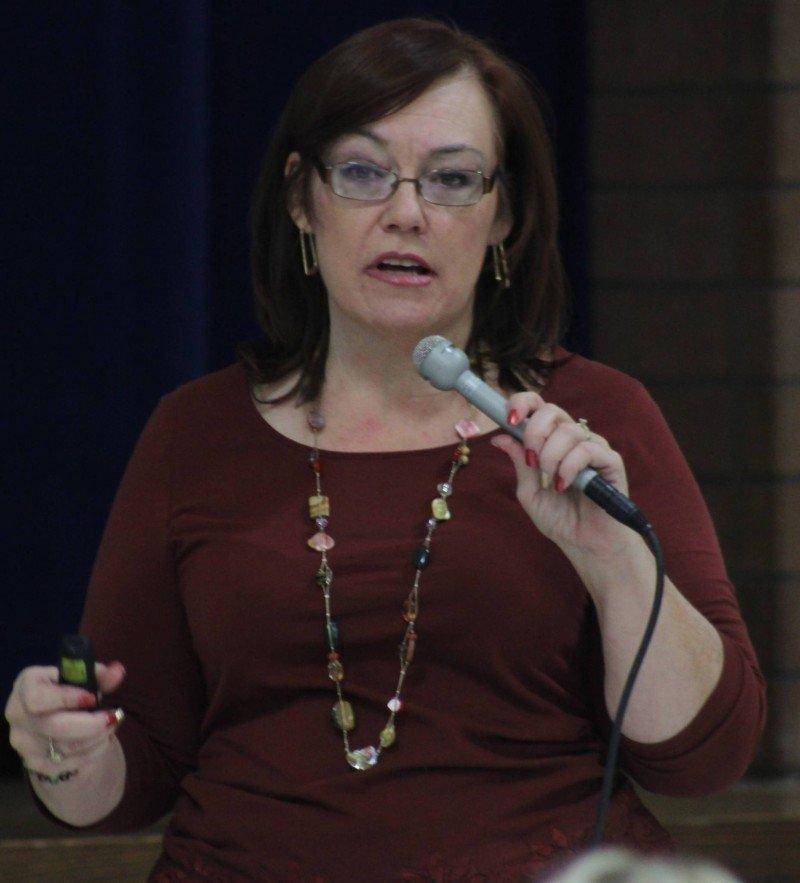Press Release
On Tuesday, Carbon School District held its annual Youth Protection Parent meeting at the district office/Lighthouse High School. The event was attended by parents and district personnel who wanted to know more about various topics concerning student safety.
The meeting was keynoted by Julie Schwartz, from the National Alliance on Mental Illness. She spoke specifically about suicide and how 90 percent of those that commit the act are mentally ill.
“Why? Why? Why?” she asked the audience. “There is no easy one answer to why people do this. But mental illness is a major factor in it.”
Schwartz, who is the School Based Prevention Manager, Suicide Prevention and Mental Health Promoter at NAMI said that 1,600 teens die each year in the United States from suicide and that 72,000 are treated for attempts at ending their lives. At some point 6.3% of teens try to commit suicide.”
“The fact is that mental illness is real,” she stated. “It is a medical condition, just like any other illness.”
She said that people just can’t overcome mental illness any more than someone with an apparent physical ailment can without some help and treatment. She pointed out that Utah is the fourth ranked state for teen suicide and that boys 15-19 are the ones at the highest risk. Statistics show that while girls try to commit suicide 2.5 times more than boys, males are much more successful in carrying it out with seven out of 10 suicide deaths being boys. That is because they usually use a much more lethal method, such as firearms.
She pointed out that myths about suicide abound in American society.
“People think that asking someone if they are thinking about committing suicide will increase its likelihood, but that is just not true,” she said. “You need to ask the question.”
She pointed out that suicide is time limited, in other words there is a period of time that people are at the highest risk, and that only lasts a short time. She also said it doesn’t happen without warning, there are always signs.
“Many who have attempted suicide, once they come through it are scared out of ever attempting it again,” she said. “Early intervention in the process is the key to stopping it.”
After the keynote breakout sessions brought some valuable information to people about various aspects of youth protection.
- Mental health issues, particularly depression, were discussed by Heath Earl, an associate professor of psychology at USU Eastern. He pointed out that children get depressed, like adults, but their depression is different. He pointed out that some answers to the problem come from emotional coaching, something developed by psychologist John Gottman.
- Bullying prevention was covered by Arthella Williams, a teacher from Carbon High who is the adviser for Rachel’s Challenge. Rachel’s Challenge is a national non-profit organization dedicated to creating safe, connected school environments where learning and teaching are maximized. Based on the life and writing of Rachel Scott, the first victim of the Columbine High School attack in 1999, Rachel’s Challenge provides a continual improvement process for schools designed to awaken the learner in every child.
- Substance abuse and awareness will be covered by Jason Marshall of the Utah Highway Patrol. Marshall is the UHP Drug Recognition Expert.
- Internet safety was discussed by Brian Judd, the school resource officer at Mont Harmon. He spoke about how law enforcement is working to find perpetrators of crimes against children that come through the internet. He said that parents need to monitor what their children are doing on-line and that they should use the privacy settings on such sites as Facebook to protect children. He also pointed out that GPS settings on phones can be used by those who want to stalk people or find out where they are if they post photos.
- Angela McCourt, the Director of the Castle Country Youth Center spoke about strengthening families.

